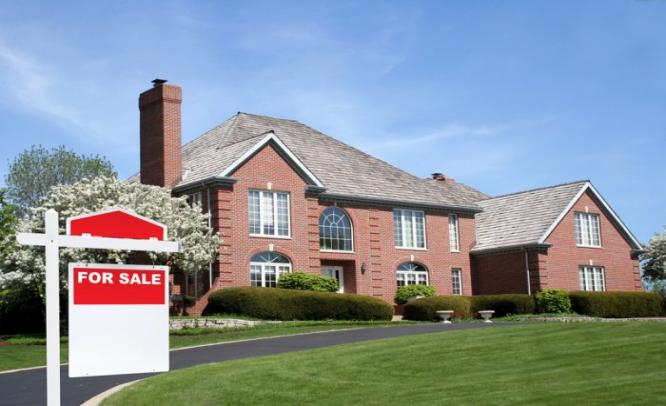Despite grim projections of a slowdown in the critical housing sector, sale of single-family new units in January rose to its highest level since July 2008, reports Team IFM
Washington, February 28: New home sales rose to a five-year high in the US in January, official data released on Wednesday said, allaying fears of a prolonged housing sector slowdown following grim forecasts by at least two sets of economists and reports of falling sales of existing homes during the month.
According to estimates released jointly by the US Census Bureau and the Department of Housing and Urban Development, sales of new single-family houses last month were at a seasonally adjusted annual rate of 468,000 – nearly 10 percent above what it had earlier estimated.
This was remarkable given the dismal new property sales notched the month before. According to Commerce Department data, December 2013 sales had fallen 7 percent to 427,000 units, earlier estimated even lower at 414,000 units.
Moreover, the December sales were below the 445,000-unit sale figure of November. Analysts had expected this trend to continue, especially as it was believed that the 15 percent sales rise in October – along with that scored in November – had more or less quenched the new home need of single families.
Alongside, the National Association of Realtors said in statement last week that in January, sales of existing home units had fallen to an 18-month low. It blamed the “unusual weather” for playing a role in dampening the housing market.
“Disruptive and prolonged winter weather patterns across the country are impacting a wide range of economic activity, and housing is no exception,” said NAR Chief Economist Lawrence Yun. “Some housing activity will be delayed until spring.”
The census department estimates caught even economists on the wrong foot. Those polled by Reuters had expected sales, which are measured when contracts are signed, to slow to a 457,000-unit pace in December, while those polled by Bloomberg were more pessimistic and predicted sales of 400,000 units.
Housing is considered a key cog in the American economy, impacting a host of industries such as banking, the mortgage sector, raw materials, employment, construction, manufacturing and real estate. Rising purchase of new homes signifies a strong economy.
The US economy may well be on its way there, with many economists such as Jim O’Sullivan, Chief US Economist at High Frequency Economics in Valhalla, New York, projecting demand to increase. “I’m hopeful the recovery in home sales will get back on track in the next couple of months,” O’Sullivan told Bloomberg.
Happy New Year
Wednesday’s data showed that between January and December-end 2013, demand jumped 16.3 percent to 428,000 – the most in five years.
The January sales of 468,000 could be the start of the recovery Valhalla economist O’Sullivan was talking of; it was the highest since July 2008, two months before the Lehman Brothers collapse that triggered the global meltdown, the effects of which are felt even to this day.
This was 9.6 percent above the revised December rate of 427,000 and 2.2 percent above the January 2013 estimate of 458,000, the Commerce Department said. The median sales price of new houses sold in January was $260,100, representing a 3.4 percent year-on-year jump.
In keeping with an all-round increase – in demand, sales and sale price – the number of permits issued and project completion also rose simultaneously.
Privately-owned housing units authorized by building permits in January were at a seasonally adjusted annual rate of 937,000, representing a 2.4 percent increase above the January 2013 estimate of 915,000. It was, however, 5.4 percent below the revised December rate of 991,000.
Single-family housing completions stood at 580,000, or 3 percent above the revised December rate of 563,000, the data showed. However, last month, the supply of new houses on the market was unchanged at 184,000 units.
Limited housing supply, along with rising interest rates and tight credit conditions are fettering further growth in the crucial housing industry, those associated with the sector say. The new homes segment, constituting only a small part of the real estate sector, was hit in the second half of 2013, mainly on account of rising mortgage rates.
In a media statement last month, David Blitzer, Chairman of the Index committee at S&P Dow Jones Indices, had said housing would make further contributions to the economy in 2014, but the pace of price gains would slow down.
Stan Humphries, Chief Economist at real estate firm Zillow, felt the same. “The housing market is still a long way from normal, but it’s getting there,” Humphries told the Associated Press.
Mortgage Blues
An indication of interest rates on new home sales may be got from the scenario in the bigger existing home sector, which is currently going through a slowdown, prompting NAR Chief Economist Lawrence Yun to observe some housing activity will be delayed until spring.
According to Freddie Mac loan mortgage corporation, the national average commitment rate for a 30-year, conventional, fixed-rate mortgage slipped to 4.43 percent in January from 4.46 percent in December; the rate was 3.41 percent in January 2013.
“We can’t ignore the ongoing headwinds of tight credit, limited inventory, higher prices and higher mortgage interest rates,” Yun said in a statement last week.
“These issues will hinder home sales activity until the positive factors of job growth and new supply from higher housing starts begin to make an impact.”


